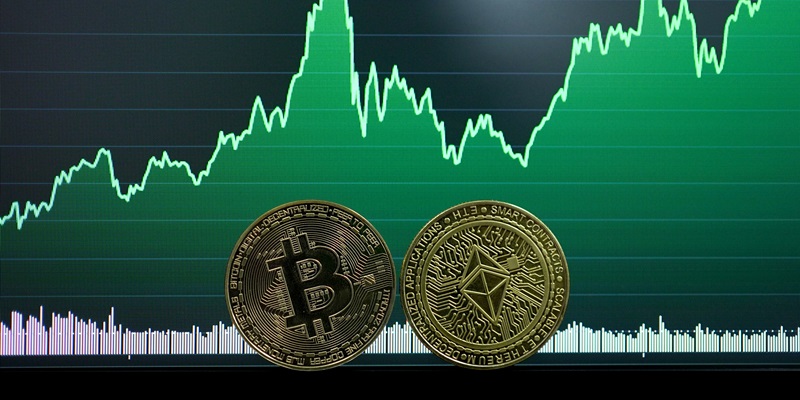The financial landscape is undergoing a notable transformation with digital assets such as Bitcoin (BTC), Solana (SOL), and Ethereum (ETH) increasingly outshining traditional financial instruments. This article delves into the contrasting performance metrics of these digital currencies compared to traditional assets, highlighting data published by Exponential Age Asset Management (EXPAAM). Raoul Pal, co-founder and CEO of Real Vision, has underscored these findings, showcasing the remarkable returns of key cryptocurrencies over both long-term and Year-to-Date (YTD) periods.
Superior Performance of Digital Assets
Analyzing Long-Term Returns
The EXPAAM table of 16 assets reveals a clear trend where digital assets vastly outperform traditional financial instruments in terms of annualized returns. According to the data, Bitcoin boasts an impressive annualized return of 140%, while Ethereum exceeds this by achieving a 149% return. Solana, a relatively newer entrant in the crypto sphere, records a striking 214% annualized return. In stark contrast, traditional assets lag significantly. The best performer among them, the Invesco QQQ Trust Series, manages to secure only an 18% annualized return.
Traditional assets such as gold present returns in the modest range of 1-8%, further accentuating their weaker performance. However, the performance of other traditional vehicles dips even lower. For example, the SPDR Bloomberg 1-3 Month T-Bill ETF (BIL) posts zero annualized returns. The Invesco DB Commodity Index Tracking Fund (DBC) performs negatively, recording an annualized return of -1%. These statistics underscore a growing disparity between the performance of digital and traditional assets, placing cryptocurrencies in a favorable position for long-term investment.
Year-to-Date Performance Metrics
Year-to-Date performance further amplifies the advantages of investing in digital assets. Data for the current year depicts a similar trend, showcasing cryptocurrencies as an attractive option for investors. Bitcoin, Ethereum, and Solana have continued their upward trajectory, further distancing themselves from traditional financial instruments. This YTD data strengthens the argument for considering cryptocurrencies as reliable investment vehicles, despite the volatility often associated with them.
Such performance is especially noteworthy given the ongoing criticisms from traditional financial experts. Peter Schiff, a staunch advocate of gold and critic of Bitcoin, has long dismissed the potential of digital assets. Schiff argues that gold is a more reliable and stable investment. However, the consistent YTD outperformance of Bitcoin and its peers challenges this viewpoint. Even significant investments in Bitcoin, like Semler Scientific’s $40 million acquisition, underscore the growing confidence in digital assets as viable and lucrative investments.
Shifts in Investment Trends
Challenging Traditional Critiques
The strong performance of digital assets is gradually eroding the criticisms posed by traditional financial experts. One of the most vocal critics, Peter Schiff, has consistently argued for gold’s supremacy over Bitcoin as a “safe haven” asset. Schiff’s contention stems from gold’s historical stability and reliability. However, the EXPAAM data showcasing Bitcoin’s robust annualized returns refutes these claims and highlights the impressive growth of digital assets. The outperformance of cryptocurrencies, despite their known volatility, suggests that digital assets are more than just speculative investments but rather increasingly mainstream options.
Contrary to Schiff’s arguments, the growing acceptance and investment in cryptocurrencies signal a shift in the broader financial landscape. As investors seek higher returns, the preference for digital assets over traditional ones becomes more evident. The significant achievements of Bitcoin, Ethereum, and Solana bolster the potential for broader acceptance and usage of cryptocurrencies in mainstream financial contexts. This paradigm shift may lead to digital assets becoming integral components of diversified investment portfolios.
Increasing Mainstream Adoption
The escalating interest in digital assets does not just erode traditional critiques but also facilitates broader mainstream adoption. Investors are beginning to recognize the potential of cryptocurrencies to deliver substantial returns that traditional assets currently fail to offer. This increasing acceptance prompts not only individual investors but also institutional players to consider cryptocurrencies seriously. Reports suggest that the robust annualized returns from digital assets are catalyzing this shift, making cryptocurrencies an attractive proposition even for conservative investors.
EXPAAM’s data on the substantial outperformance of digital assets underscores the changing landscape in financial markets. With digital currencies showing superior long-term and YTD performance, critics might find it increasingly difficult to undermine their value. As such, cryptocurrencies are poised to gain greater integration into traditional financial systems, fostering increased investment and usage. This trend is transforming the financial industry, potentially making digital assets a cornerstone of future investment strategies.
The Financial Performance Disparity
The financial world is experiencing a significant shift as digital assets like Bitcoin (BTC), Solana (SOL), and Ethereum (ETH) increasingly prove superior to traditional financial instruments. This article examines the differing performance metrics between these digital currencies and conventional assets, with key data sourced from Exponential Age Asset Management (EXPAAM). According to Raoul Pal, co-founder and CEO of Real Vision, the findings reveal outstanding returns for major cryptocurrencies, both in terms of long-term growth and Year-to-Date (YTD) performance. Pal’s insights emphasize the exponential gains seen in these digital currencies, making them attractive investment options. While traditional assets have struggled to generate comparable returns, Bitcoin, Solana, and Ethereum have consistently delivered impressive gains, reflecting the growing trust and adoption of digital assets among investors. This shift suggests that digital currencies might continue to outpace traditional financial instruments, transforming the future landscape of investments and wealth management.

